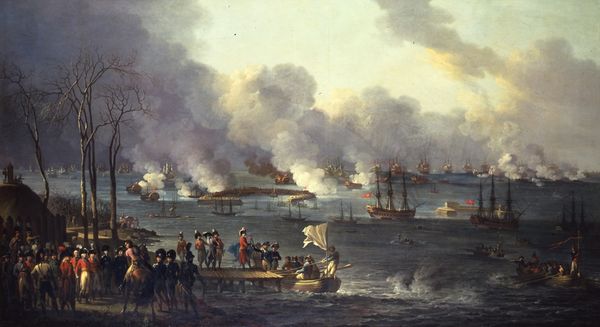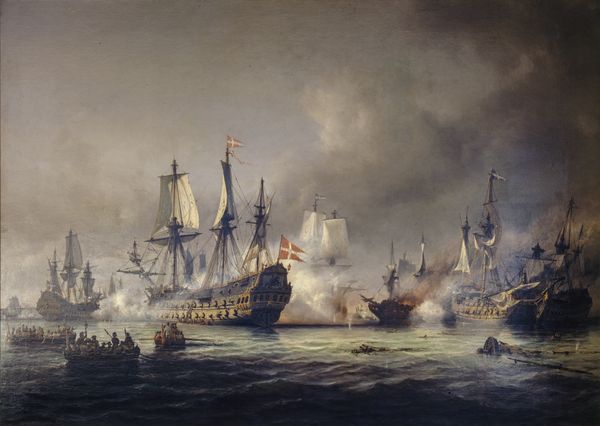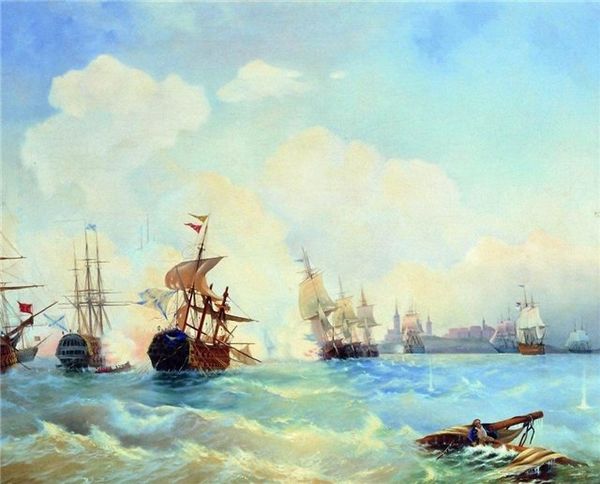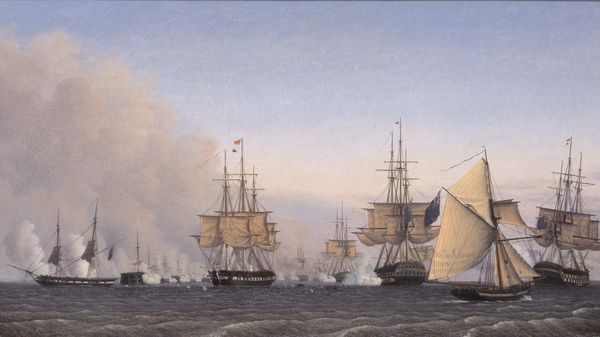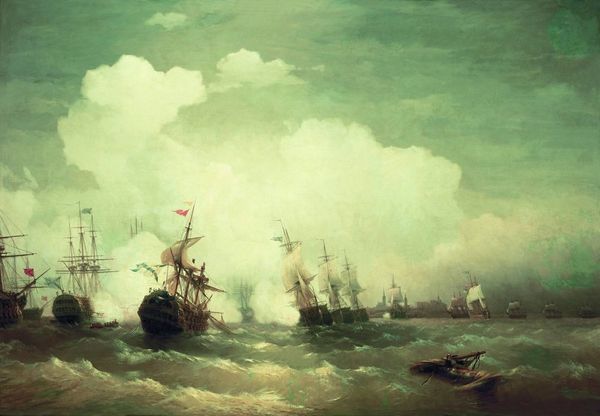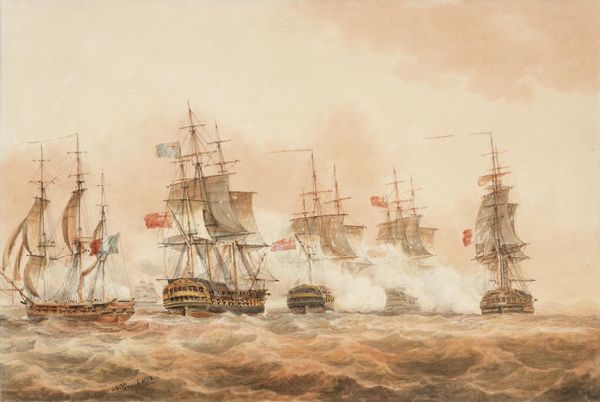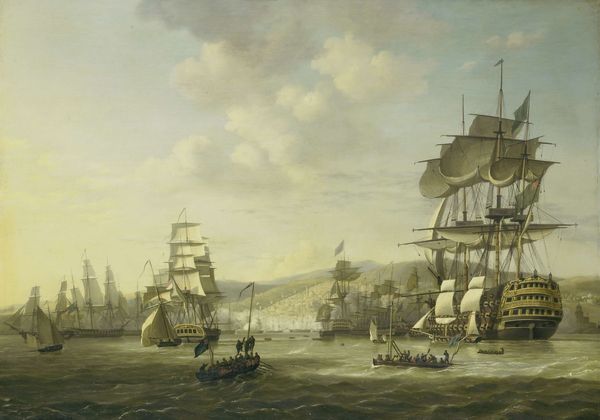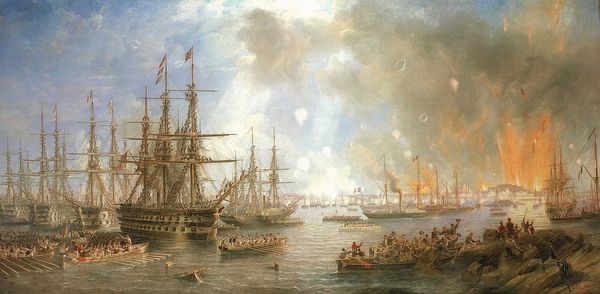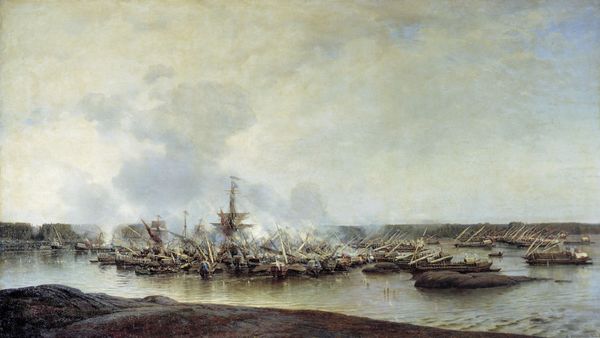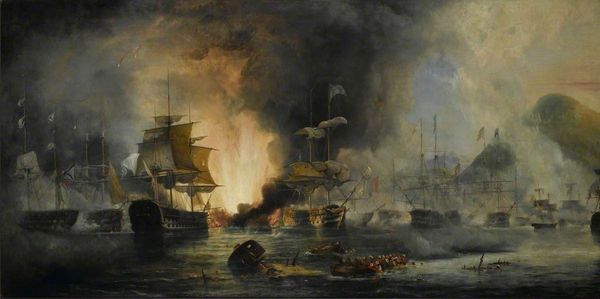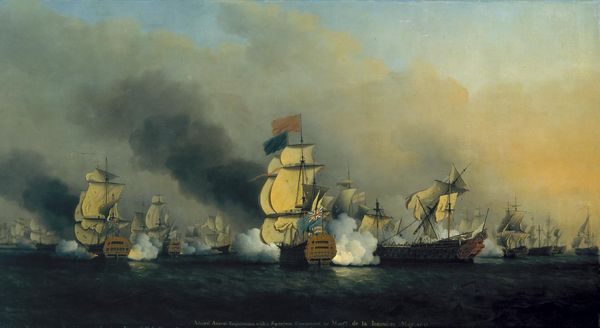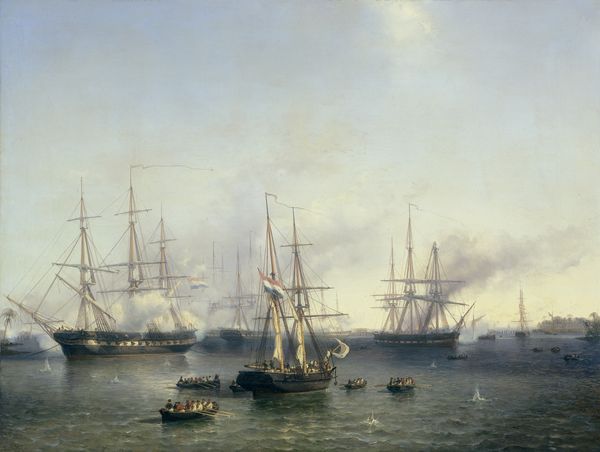
#
impressionistic
#
boat
#
abstract painting
#
ship
#
impressionist painting style
#
vehicle
#
war
#
charcoal drawing
#
impressionist landscape
#
possibly oil pastel
#
oil painting
#
fluid art
#
underpainting
#
water
#
watercolor
Copyright: Public domain
Editor: This is Anton Melbye's "The Battle of Grand Port," painted in 1859. The scene is… chaotic, yet captivating, with these imposing ships amidst smoke and what appears to be wreckage. It really brings home the sheer violence of naval warfare. What symbols or stories do you see woven into this dramatic depiction? Curator: The swirling smoke, a near-constant in battle depictions, isn’t merely aesthetic. It represents the obscuring of truth, the fog of war that disorients and isolates. The ships themselves, though symbols of power, are rendered fragile by the chaos surrounding them. Do you notice how some seem to be listing? Editor: Yes, they almost seem vulnerable, like wounded beasts. I suppose that speaks to the transience of power, then? Curator: Precisely. Consider the water itself. It's not the romanticized, idealized sea often depicted in maritime art. Here, it is turbulent, almost viscous, a direct reflection of the human drama unfolding upon it. Water, traditionally a symbol of life and renewal, is here tainted by conflict. Look closer, what is its colour and consistency suggesting? Editor: It appears churned and stained, reflecting the sky, almost as if stained by the fire. That’s so striking. So even something as seemingly straightforward as the water carries so much weight! Curator: Absolutely. Every element works to create a layered narrative, evoking the cultural memory of naval power but also its brutal consequences. What do you take away from understanding those interwoven symbols? Editor: It's definitely given me a much richer understanding of how seemingly simple elements like smoke and water can profoundly affect how we interpret a scene and how it lingers in cultural memory. Thanks!
Comments
No comments
Be the first to comment and join the conversation on the ultimate creative platform.
